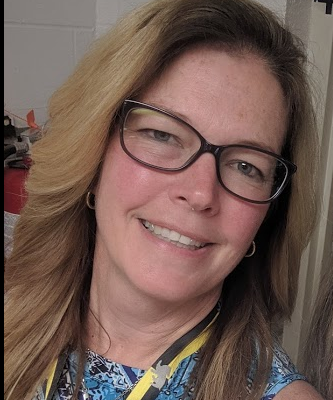This year’s ACTEM Conference in Augusta, Maine, “Rebooted and Reimagined,” included many excellent sessions on a wide range of informative technology topics, but the session that I found by far to be the most interesting was Dan Ryder’s “Design Thinking Through Technology” workshop.
Dan is a super cool human being for any number of reasons. For one thing, he is an out of the box thinker to the ninth degree who had the creative smarts to write a grant to secure a 3D printer for his English classroom. How awesome is that? Students can now produce 3D versions of poetry assignments!
I am convinced that those of us as educators who think outside the borders of our disciplines, who value learning as a process and creativity as central to learning have the most to offer our students. I am also convinced that by role modeling important team building skills through development of interdisciplinary projects we are equipping our students to thrive in the global workplace.
Dan is an educator who completely walks his talk through his embracing of Design Thinking in the classroom. For those who are wondering why an English teacher would incorporate what we generally think of as STEM concepts, let me explain by sharing an example.
Dan asked us, “How might we uncover poetry as design?” Poetry is a user-centered experience. Graphic design is a poetic device. Through remix and interpretation students participate in iteration and production. By considering poets as designers, we open the door to collaborative, creative activity that is student centered, empathy fueled and authentic.
There are as many processes for Design Thinking as there are designers. In Dan’s workshop, educators and administrators from a wide range of disciplines explored the “DEEP” model: discover, empathize, experiment and produce. It’s a people centered, problem solving approach that starts with identifying strengths and weaknesses of each team member.
When one thinks about how often in the education world we are thrown on committees without really knowing the skills of our fellow committee members, one can immediately appreciate the benefit of taking the time to first identify individual team member’s strengths and weaknesses.
Our workshop assignment was to design a better handheld device for the classroom. Brainstorming about roses (bright spots), thorns (pain points) and buds (potential )was followed by pre-reflection activities in which user needs were identified along with strategies for meeting those needs. Experimentation and fine-tuning of ideas followed.
Prototyping with technology included the use of Makerbot Makerware and Silhouette Studio, as well as use of RealTime Board, SoundCloud and PhotoBooth. For those who would like to learn more about Design Thinking, I offer the following websites including Dan’s own www.DanRyder207.com; his class site on Blogger: www.flight307.blogspot.com; as well as www.deepdesignthinking.com; www.IDEO.com; and www.LUMA-Institute.com.
About the Author: Ms. Collins has worked as a Media Specialist/Librarian for 14 years in locales ranging from California to Kathmandu, Nepal. She currently works as Librarian/Media Specialist at Sharon High School in Sharon, Massachusetts. She serves on the Executive Boards of both the Massachusetts Library System and MassCUE (Massachusetts Computer Using Educators). She earned National Board Certification as a Library/Media Teacher in 2009 and is the 2014 recipient of the AASL Intellectual Freedom Award. Her writing contributions include a chapter featured in the recently published ISTE book, “Literacy in the Digital Age,” Library Media Connection (“Survival Tactics for the Warrior Librarian,”) NEA and other education-related blog posts and journals. She served as a project consultant for the learning layer of the multi-media e-book, “Searchlights and Sunglasses: Field Notes from the Digital Age of Journalism.”
 Print this post
Print this post



